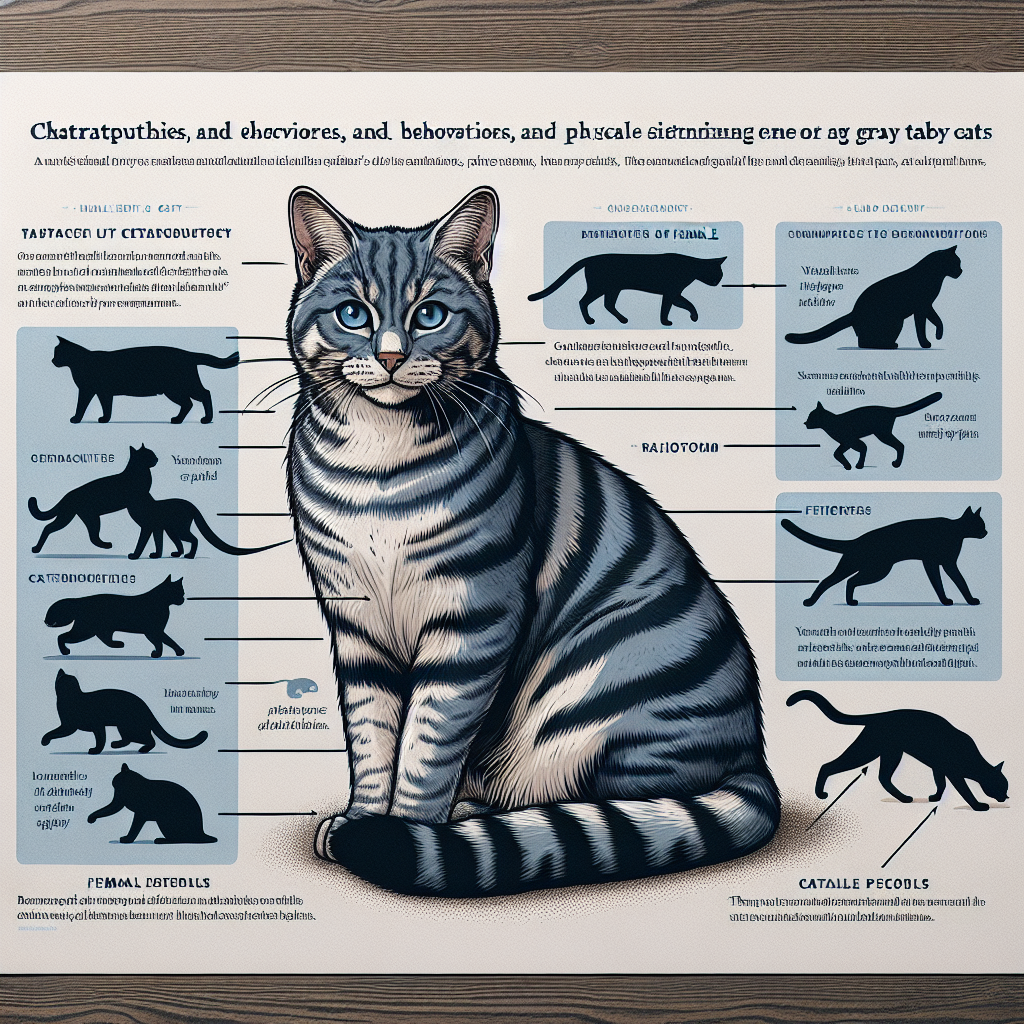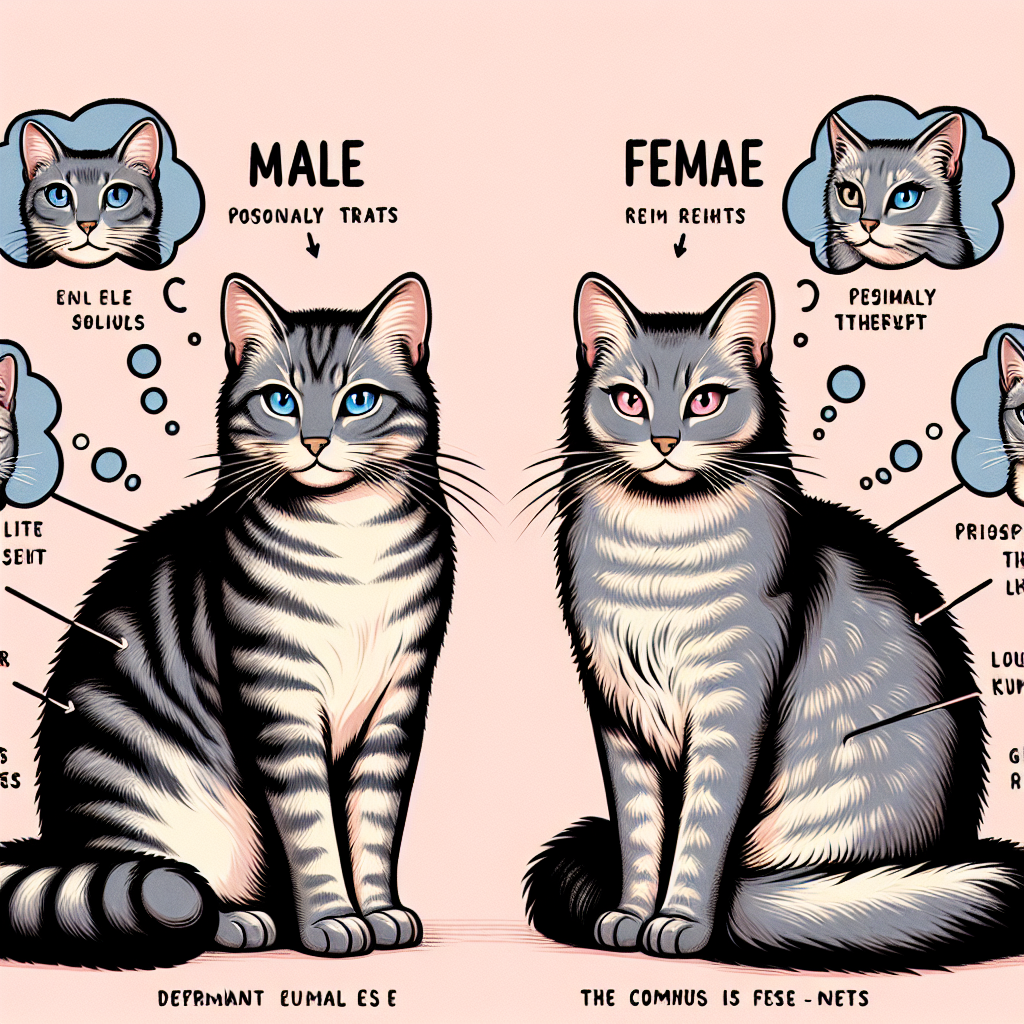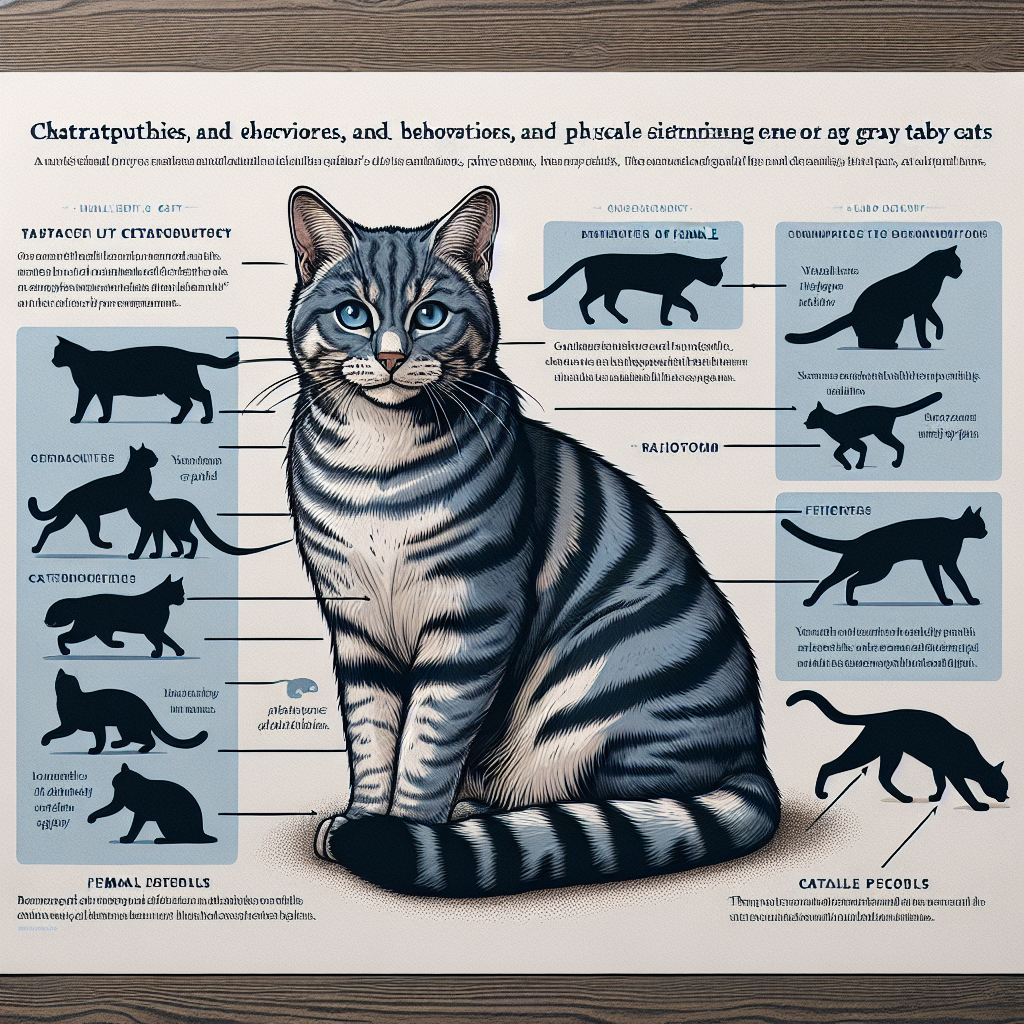Gray tabby cats are beloved pets for many cat owners, but have you ever wondered about their sex? In this article, we will explore the fascinating world of gray tabby cats and unravel the mystery of their gender. Whether you are a new cat owner or simply curious, this article will provide you with all the information you need to know about the sex of these charming felines. So, let’s embark on this journey together and discover the secrets behind the sex of gray tabby cats.
Physical Characteristics
Coat Color
Gray tabby cats have a distinctive coat color that is predominantly gray, with stripes or swirls of a darker shade of gray or black. The base coloration of the coat varies from light gray to dark gray, and the intensity of the tabby markings can also vary. Some gray tabby cats may have a slightly brownish tint to their coat, giving them a warm and unique appearance.
Tabby Pattern
Tabby cats display various patterns on their coats, and gray tabby cats are no exception. The most common tabby patterns seen in gray tabby cats are the mackerel pattern, where the stripes resemble fishbones, and the classic pattern, where the markings form swirling patterns on the cat’s sides. Other tabby patterns such as spotted and ticked can also be seen in gray tabby cats, although they are less common.
Size
Gray tabby cats come in various sizes, depending on their individual genetics and overall health. There is no specific size characteristic that is exclusive to gray tabby cats as it can vary greatly from one cat to another. However, on average, adult gray tabby cats are typically medium to large in size, with a sturdy and muscular build.
Build
The build of gray tabby cats is generally robust and athletic. They have a balanced and proportional body structure, with strong muscles and good overall agility. Their legs are of medium length, allowing them to move swiftly and gracefully. Despite their muscular build, gray tabby cats maintain an elegant and sleek appearance.
Determining Sex
External Genitalia
Determining the sex of a gray tabby cat can be done through a visual examination of the external genitalia. Male gray tabby cats have a pair of scrotal sacs located underneath the anus, while females have a small opening called the vulva. It is important to note that determining the sex of very young kittens can be challenging as their external genitalia may not be fully developed.
DNA Testing
In some cases, it may be difficult to determine the sex of a gray tabby cat based solely on external appearance. In such situations, DNA testing can provide accurate results. A DNA test involves collecting a sample, usually through a cheek swab, and sending it to a specialized laboratory for analysis. This method can be particularly useful in cases where the gray tabby cat is intended for breeding purposes or if accurate sex identification is necessary for medical reasons.

Coat Color Genetics
Basic Genetics
Understanding the coat color genetics of gray tabby cats involves delving into the world of feline genetics. Coat color is determined by specific genes that control the production and distribution of pigments in the fur. Without going too deep into the technical details, it is important to note that gray tabby cats inherit their coat color and patterns from their parents through a combination of various genetic factors.
Orange vs Non-Orange
One important aspect of gray tabby cat genetics is the presence or absence of the orange gene. The orange gene, also known as the O gene, determines whether a cat will have orange-colored fur or not. Male cats can only have orange fur if they inherit the gene from both parents since it is a sex-linked trait. Therefore, male gray tabby cats can be orange or non-orange, depending on the inheritance of the O gene.
Sex-Linked Traits
The inheritance of coat color and patterns in gray tabby cats can be influenced by sex-linked traits. These traits are primarily determined by genes located on the sex chromosomes, X and Y. Since males possess one X and one Y chromosome, any genes present on the X chromosome will be fully expressed. However, in females, who possess two X chromosomes, one X chromosome may be inactivated, leading to variations in coat color and patterns.
Tabby Pattern Genetics
Mackerel Tabby
The mackerel tabby pattern is one of the most common tabby patterns seen in gray tabby cats. It is characterized by narrow, vertical stripes that resemble the bones of a fish, hence the name “mackerel.” This pattern is inherited through a combination of genes that determine the spacing and width of the stripes. The intensity and crispness of the mackerel tabby pattern can vary from cat to cat.
Classic Tabby
The classic tabby pattern, also known as the blotched tabby pattern, is another common pattern seen in gray tabby cats. It is characterized by large, swirling patches or “bull’s eye” patterns on the cat’s sides. The classic tabby pattern is inherited through the interaction of specific genes that control the distribution and shape of the patches. Each patch can vary in size and intensity, creating a beautifully intricate pattern.
Spotted Tabby
The spotted tabby pattern is relatively less common in gray tabby cats but still occasionally seen. As the name suggests, this pattern is characterized by distinct spots rather than stripes or swirls. The spots can vary in size and shape, from small dots to larger, irregular shapes. The inheritance of the spotted tabby pattern involves genes that control the formation and distribution of spots on the cat’s coat.
Ticked Tabby
The ticked tabby pattern is characterized by fur that is evenly colored without distinct stripes or patches. Each individual hair shaft is banded with alternating light and dark colors, giving a “salt-and-pepper” appearance. The ticked tabby pattern is inherited through a combination of genes that determine the length and structure of each hair shaft. This pattern is less common in gray tabby cats but can be seen in certain individuals.

Common Misconceptions
Tabby Cats are Always Female
Contrary to popular belief, tabby cats can be either male or female. The tabby pattern is not exclusive to one sex or the other. While it is true that certain coat color variations, such as tortoiseshell and calico, are more commonly seen in female cats due to the specific genetic mechanisms involved, the tabby pattern itself is not associated with a particular sex.
All Gray Tabby Cats are Male
Another common misconception is the belief that all gray tabby cats are male. This misconception arises from the association between the orange gene and the gray coat color. Male gray tabby cats can be either orange or non-orange, depending on their genetic inheritance. Female gray tabby cats can also possess the gray coat color and tabby patterns.
Gray Tabby Cat Health
Genetic Disorders
Like any other cat breed or coat color, gray tabby cats can be susceptible to certain genetic disorders. These disorders are not specific to the coat color but can be present in cats of any color or pattern. It is important for gray tabby cat owners to be aware of common genetic disorders that may affect their cats and take necessary preventive measures. Regular veterinary check-ups and genetic testing, if available, can help identify potential health risks.
Care and Prevention
To maintain the health and well-being of gray tabby cats, proper care and prevention strategies should be implemented. This includes regular visits to the veterinarian for vaccinations, dental cleanings, and overall health check-ups. A balanced and nutritious diet tailored to the cat’s specific needs is essential. Additionally, providing adequate mental and physical stimulation through playtime and environmental enrichment can contribute to a happier and healthier gray tabby cat.
Personality Traits
Affectionate
Gray tabby cats are known for their affectionate nature. They often form strong bonds with their owners and enjoy spending quality time with them. They can be avid cuddlers and enjoy being petted and stroked. Gray tabby cats are known to provide comfort and companionship to their owners, making them wonderful additions to any household.
Playful
Gray tabby cats have a playful and energetic nature. They have a natural curiosity that drives them to explore their surroundings and engage in various play activities. Provide them with interactive toys, scratching posts, and opportunities for playtime to keep them mentally stimulated and physically active.
Independent
While gray tabby cats are affectionate and playful, they also have an independent streak. They appreciate having their personal space and may enjoy moments of solitude. This independence does not mean they are aloof or distant; it simply means they value their alone time and prefer to explore and observe their surroundings at their own pace.
Tips for Gray Tabby Cat Owners
Spaying or Neutering
To prevent unwanted litters and potential health issues, it is highly recommended to have your gray tabby cat spayed or neutered. Spaying or neutering not only helps control the cat population but also reduces the risk of certain reproductive-related diseases and behavioral problems.
Regular Veterinary Check-ups
Routine veterinary check-ups are vital for the overall health and well-being of gray tabby cats. Regular vaccinations, parasite prevention, dental care, and early detection of any potential health issues can all be addressed during these check-ups. Consult with your veterinarian to establish a suitable schedule for your gray tabby cat’s wellness visits.
Grooming
Gray tabby cats require regular grooming to maintain a healthy coat and minimize hairballs. Brushing their coat at least once a week helps remove loose hair and prevents matting. Additionally, periodic nail trims, ear cleanings, and dental care should also be part of their grooming routine.
Proper Nutrition
Providing a balanced and nutritious diet is essential for the overall health and longevity of gray tabby cats. Consult with your veterinarian to determine the best diet for your cat’s specific needs. Ensure the diet includes high-quality protein, essential vitamins and minerals, and an appropriate balance of fats and carbohydrates.
Breeding Gray Tabby Cats
Understanding Genetics
Breeding gray tabby cats involves a thorough understanding of feline genetics, particularly regarding coat color and pattern inheritance. Breeders need to be familiar with the various genes responsible for specific coat colors and patterns to make informed breeding decisions. Only through this understanding can breeders work towards producing healthy and genetically diverse gray tabby cats.
Breeding Strategies
Breeding strategies for gray tabby cats should prioritize the health and well-being of the breeding cats and their offspring. Breeders need to ensure that both the male and female cats have undergone genetic testing to rule out any inherited disorders. Selecting mating pairs with complementary genetic traits can help produce kittens with desirable coat colors and patterns while minimizing the risk of genetic health issues.
Ethical Considerations
When breeding gray tabby cats, it is essential to uphold ethical considerations. Responsible breeders prioritize the welfare of their cats and adhere to appropriate breeding practices. This includes providing proper veterinary care, socializing kittens, and ensuring they are placed in suitable homes. Ethical breeders also prioritize the preservation and improvement of the breed while avoiding overbreeding or contributing to the cat overpopulation problem.
Gray Tabby Cats in Popular Culture
Famous Gray Tabby Cats
Gray tabby cats have left their mark in popular culture, with several notable examples of famous felines. One well-known gray tabby cat is “Morris,” the mascot of a famous brand of cat food. Another iconic gray tabby cat in popular culture is “Garfield,” the lasagna-loving, orange and gray-striped cat that has entertained millions through comic strips and animated adaptations.
Symbolism and Representation
Gray tabby cats often symbolize attributes such as strength, resilience, and independence. They are often associated with mystery and wisdom. In folklore and literature, these cats are sometimes depicted as magical or having supernatural abilities. Gray tabby cats have also been represented in works of art and literature as beloved and cherished pets, further cementing their special place in popular culture.
In conclusion, gray tabby cats possess unique physical characteristics, coat color genetics, and distinct personality traits. They come in various patterns and sizes, and their sex can be determined through visual examination or DNA testing. Common misconceptions regarding tabby cats’ sex have been debunked, and it is important to understand the health considerations and care requirements for gray tabby cats. Whether as a cherished companion or in breeding endeavors, gray tabby cats continue to captivate the hearts of many and leave a lasting impression in popular culture.

